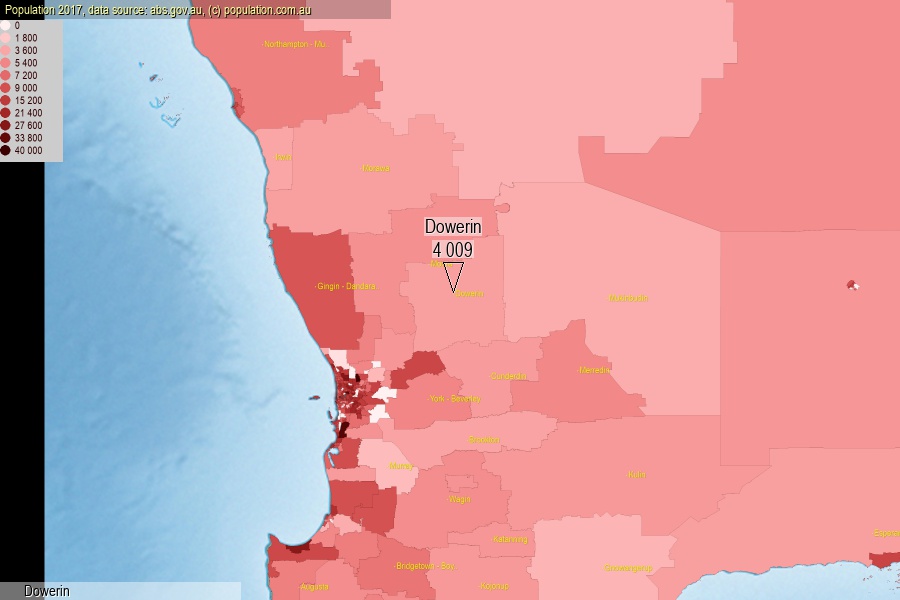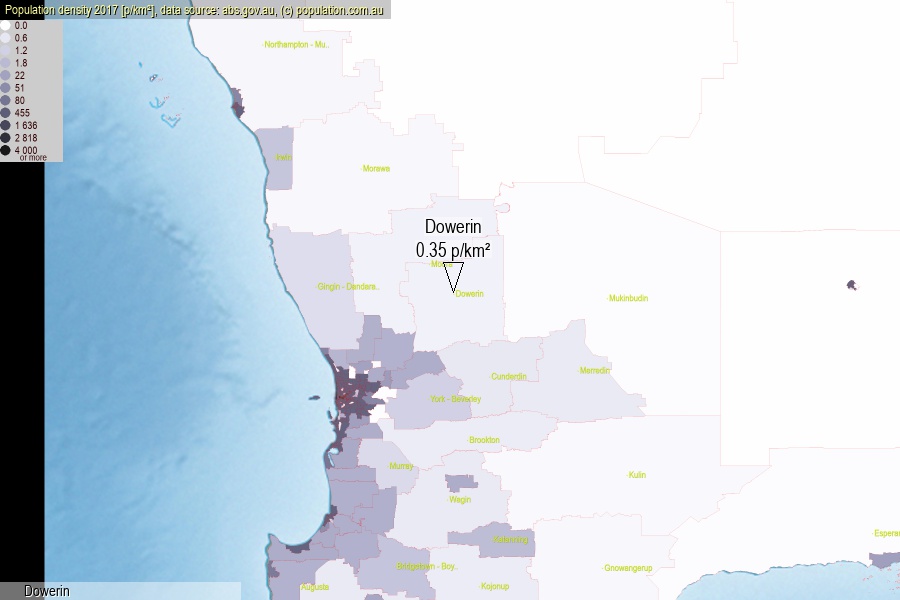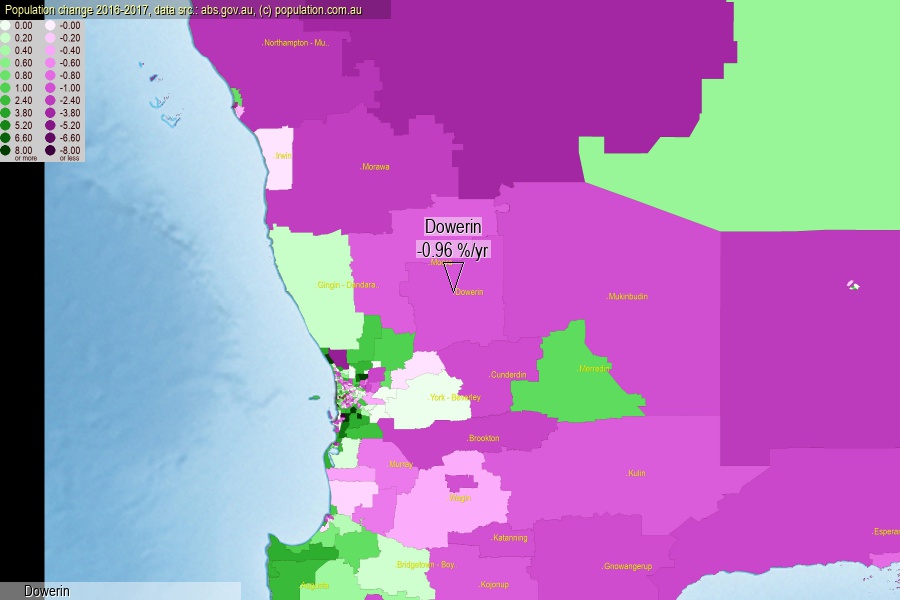 population.com.au
population.com.auLast official estimated population of Dowerin (as Statistical Area Level 2) was 4 009 people (on 2017-06-30)[2]. This was 0.02% of total Australian population and 0.155% of WA population. Area of Dowerin is 11 490.40 km², in this year population density was 0.35 p/km² . If population growth rate would be same as in period 2016-2017 (-0.96%/yr), Dowerin population in 2025 would be 3 710. [0]



Click to enlarge. Dowerin is located in the center of the images.
Population [people], population density [p./km²] and population change [%/year] [2]
View borders » (new window) [4]
[1991-1992] -1.79 %/Yr.
[1992-1993] -1.74 %/Yr.
[1993-1994] -1.95 %/Yr.
[1994-1995] -0.86 %/Yr.
[1995-1996] -0.61 %/Yr.
[1996-1997] -1.34 %/Yr.
[1997-1998] -2.02 %/Yr.
[1998-1999] -1.56 %/Yr.
[1999-2000] -1.11 %/Yr.
[2000-2001] -0.93 %/Yr.
[2001-2002] -1.59 %/Yr.
[2002-2003] -1.58 %/Yr.
[2003-2004] -1.24 %/Yr.
[2004-2005] -1.69 %/Yr.
[2005-2006] -1.67 %/Yr.
[2006-2007] -2.50 %/Yr.
[2007-2008] -0.12 %/Yr.
[2008-2009] +0.66 %/Yr.
[2009-2010] 0.00 %/Yr.
[2010-2011] +0.89 %/Yr.
[2011-2012] +0.41 %/Yr.
[2012-2013] +0.10 %/Yr.
[2013-2014] -1.14 %/Yr.
[2014-2015] -0.94 %/Yr.
[2015-2016] -1.72 %/Yr.
[2016-2017] -0.96 %/Yr.
[0] Calculated with linear interpolation from officially estimated population
[1] Read more about SA2 and Australian Statistical Geography Standard (ASGS) on abs.gov.au
[2] Population data from Australian Bureau of Statistics (Population and density: 2017; change: 2016-2017)
[3] Digital Boundaries: Australian Statistical Geography Standard (ASGS) 2016.
[4] Border coordinates are simplifyed using Ramer-Douglas-Peucker algorithm.